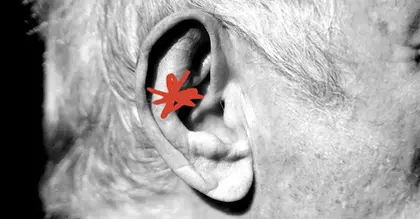
- Getting enough exercise is an essential part of keeping healthy and active, particularly as you get older, but many people struggle to fit exercise into their daily routines.
- Now, researchers have found that ‘exercise snacks’ — short bursts of physical activity — may be an effective way for less active people to enhance their cardiorespiratory fitness.
- Because exercise is taken in short bursts of around 5 minutes at least twice a day, people are more likely to stick to this exercise regime than other more time-consuming exercise plans.
Regular physical activity is essential for health, helping to reduce the risk of cardiovascular disease, diabetes, cancer, hypertension, obesity, depression, and osteoporosis, as well as premature death.
However, many adults struggle to achieve the 150 minutes of moderate activity, or 75 minutes of intense activity each week recommended by the
Now, a review study has shown that, for physically inactive adults, short bursts of physical activity, known as “exercise snacks,” may be effective in enhancing heart and lung function.
First author of the study, Miguel Ángel Rodríguez, a doctoral researcher in clinical research at the University of Oviedo, Spain, told Medical News Today that:
“When people are asked why they don’t exercise, the most common answers are lack of time and lack of motivation. Exercise snacks directly address both: They’re short, flexible, and easy to fit into daily routines.”
The study, published in the British Journal of Sports Medicine, suggests that exercise snacks could be an easy way to get some exercise every day, particularly if you are otherwise physically inactive.
Cheng-Han Chen, MD, a board-certified interventional cardiologist and medical director of the Structural Heart Program at MemorialCare Saddleback Medical Center in Laguna Hills, CA, who was not involved in the research, explained that “this review analyzed multiple previous studies and found that brief (less than 5 minutes) periods of moderate-to-intense exercise at least twice a day was associated with improved cardiorespiratory fitness.“
“These findings provide a potential avenue for sedentary people to obtain a health benefit with only short amounts of physical activity,” said Chen.
The researchers analyzed data from 11 studies, from Canada, Australia, China and the United Kingdom. The 414 participants (approximately one-third men and two-thirds women), ranged in age from 18-75 years.
All participants were sedentary or physically inactive at the start of the programs and, in studies that recorded
Exercise protocols varied between studies. Participants exercised on 3, 4, 5 or 7 days a week, carrying out between 2 and 10 ‘exercise snacks’ per day at moderate to vigorous levels, for a maximum of 5 minutes at a time, over a period of between 4 and 12 weeks.
Types of exercise included stair climbing, leg-focused strength exercises and
The researchers noted that 83% of participants stuck to the program for the entirety of the study they were involved in, which is much higher than for other exercise protocols, such as high-intensity interval training (HIIT), to which only 63% of participants adhere.
The researchers assessed several outcomes, including cardiorespiratory fitness, muscle strength and endurance, blood lipids (cholesterols and triglycerides), BMI, body fat percentage and fat distribution. They also looked at balance, blood pressure, and mental health outcomes including anxiety and depression.
Even when participants were undertaking less than the CDC’s recommended amount of exercise per week, exercise snacks resulted in statistically significant improvements in cardiorespiratory fitness (heart and lung function) in younger physically inactive adults, and in muscular endurance in older adults.
“What’s remarkable is that these gains were achieved with exercise volumes far below current
However, the researchers emphasize that as only one of the studies compared exercise snacks with moderate intensity continuous exercise, they cannot determine whether these benefits are equivalent to those achieved with longer sessions.
“The main message is that exercise does not need to be long, structured, or complicated to be effective. Short, repeated bouts of activity (i.e., ‘exercise snacks’) can significantly improve fitness with very little time commitment,” Rodríguez advised.
“It is important to recognize that exercise should ideally be individualized to maximize its benefits,” he continued. “The response to training can differ substantially between adults and older adults, due to variations in physiological capacity, recovery rate, and baseline fitness. To optimize health-related outcomes, some degree of programming and personalization of these exercise bouts becomes necessary.”
“Nevertheless,” he added, “any opportunity throughout the day to move, even briefly, can make a meaningful contribution. Incorporating short, vigorous snacks of activity whenever possible remains a highly valuable and accessible strategy for improving overall health and cardiorespiratory fitness.”
Chen agreed: “This form of exercise might be an efficient way for busy and/or sedentary individuals to get at least some cardiopulmonary benefit with only brief periods of higher-intensity physical activity.”
For those who are physically inactive and/or short of time, Rodríguez suggested a number of different activities that can be easily fitted into daily routines:
“For healthy adults, practical examples include fast stair climbing, bodyweight squats, lunges, push-ups, or even burpees, provided that their physical condition allows these higher-intensity movements. For older adults or individuals with lower fitness levels, more accessible activities such as chair stands, light resistance training, or short bouts of balance and coordination exercises like tai chi can be highly effective.”
However, he added that, particularly for those over 50 years of age, “balancing intensity, safety, and consistency is essential when implementing exercise snacks in everyday life.”





